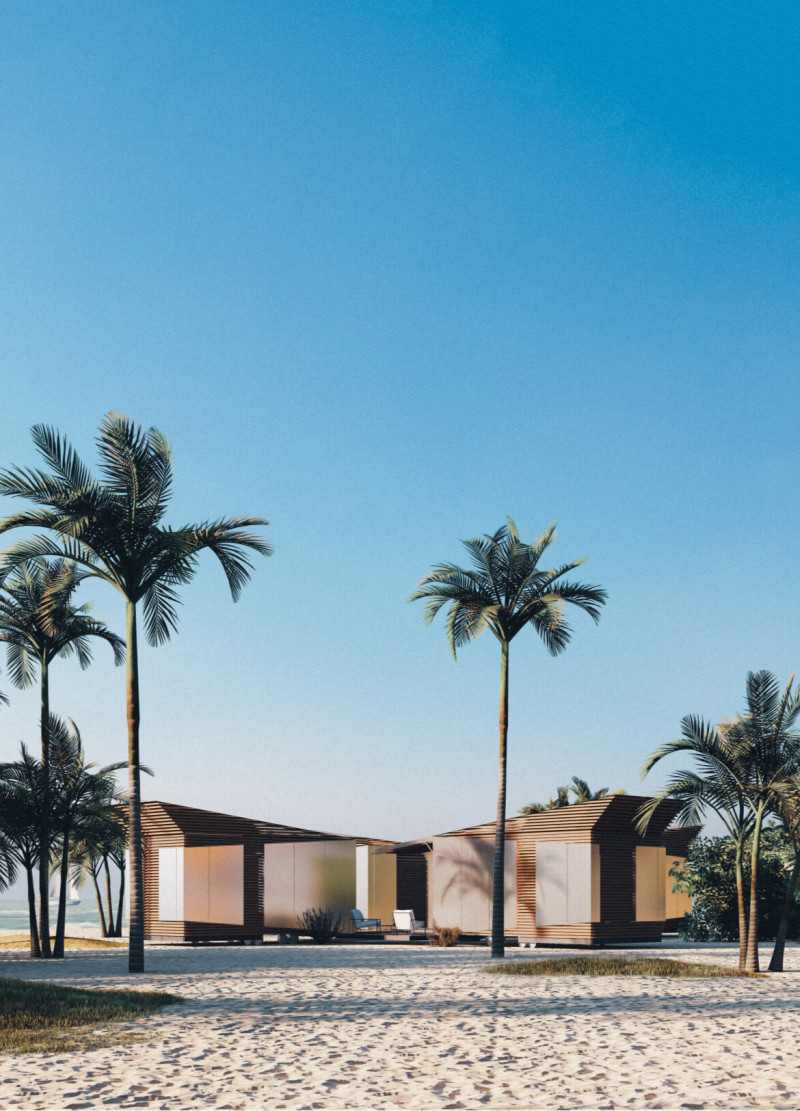5 key facts about this project
The core function of the project is multifaceted; it is designed to accommodate various activities, including public gatherings, exhibitions, and educational programs. This multifunctionality is realized through an innovative spatial layout that encourages flexibility and adaptability in use. The design thoughtfully incorporates open-plan spaces that allow for easy reconfiguration, facilitating a wide range of events and activities. These spaces are interspersed with smaller, more intimate areas that provide opportunities for private reflection or community interaction, striking a balance between collective and individual experiences.
One of the defining features of the project lies in its materiality, which speaks to both durability and aesthetic appeal. The architectural design prominently uses locally sourced materials, reinforcing a connection to the surrounding environment and promoting sustainability. Key materials include reinforced concrete, which provides structural integrity; glass, which enhances transparency and natural lighting; and timber, selected for its warmth and natural beauty. The combination of these materials not only contributes to the building's overall functionality but also reflects contemporary architectural sensibilities, resulting in a coherent and unified appearance.
The design approach is characterized by a deep respect for the site’s topography and environmental context. By carefully analyzing the geographical location, the architects have positioned the structure to take advantage of natural light and prevailing winds, enhancing energy efficiency and comfort for occupants. The incorporation of green roofs and outdoor terraces further emphasizes the project’s commitment to sustainability, providing spaces for urban biodiversity and reducing the heat island effect often associated with dense urban environments.
Unique aspects of the design include a series of cantilevered elements that create dramatic visual interest while optimizing usable space. These overhangs not only contribute to the building's aesthetic appeal but also provide crucial shade and shelter, enhancing the outdoor experience for users. Additionally, the integration of passive design strategies—such as natural ventilation and solar control—demonstrates a forward-thinking approach to environmental sustainability, setting a precedent for future architectural endeavors in similar contexts.
In order to foster a sense of community, the project incorporates large, accessible public areas that serve as gathering spots for local residents. These spaces are designed to encourage social interaction and engagement, reflecting the architects’ intention to cultivate a vibrant public life. Artistic installations and landscaping elements are also woven throughout the site, reinforcing a narrative that celebrates the locality's cultural identity while inviting visitors to explore and connect with the space.
As such, this architectural project not only fulfills its intended functions but also exemplifies a thoughtful dialogue with its surroundings. The balance between aesthetics and practicality is evident in every aspect of the design, showcasing how architecture can respond to and enhance the community it serves.
For those interested in a more comprehensive understanding of this architecture project, exploring its architectural plans, sections, and accompanying design documentation will provide deeper insights into the innovative ideas that have shaped its construction and function. Engaging with these elements will reveal the thought processes behind the design and allow for a greater appreciation of the project’s contribution to contemporary architectural discourse.


 Serkan AteŞ
Serkan AteŞ 























